Ghost of Tsushima PC performance analysis: Your CPU will be fine, your GPU will whine, but there are settings for every gamer out there
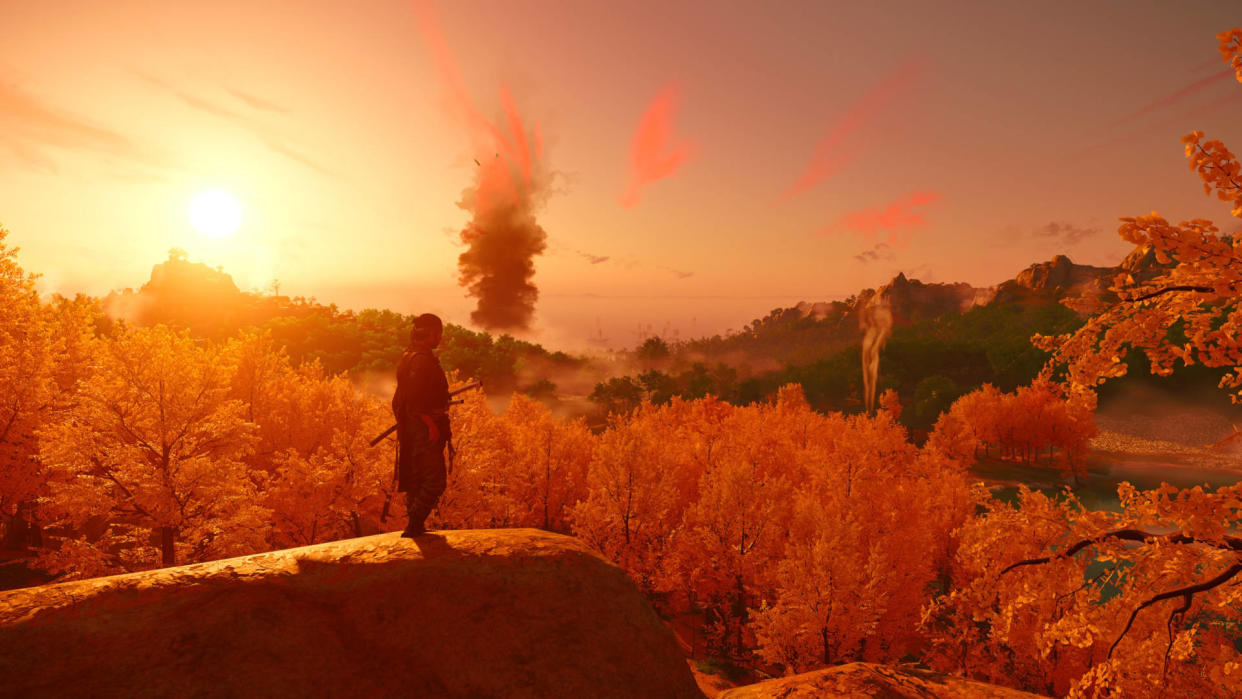
Ghost of Tsushima, developed by Sucker Punch and published by Sony, first appeared in the summer of 2020 for the PlayStation 4, with a mildly expanded version for the PlayStation 5 arriving a year later. Now it's available for the PC, after being given a thorough conversion by porting wizards Nixxes Software, whose portfolio also includes ports of Horizon Forbidden West, Ratchet and Clank: Rift Apart, and Spider-Man Remastered.
For the most part, Nixxes has done a superb job of the conversion, with all of the latest rendering technologies, such as upscaling and frame generation, as well as support for ultra-wide monitors and PlayStation and Nintendo controllers.
However, it's not an entirely flawless port, but I suspect most of the issues will get ironed out via patches.
Sony provided no early preview code of Ghost of Tsushima, so all of my performance testing was done on the version that everyone around the world has access to, i.e. the global release version. That means the performance data we've got is as the game is on release, without any pre-release weirdness adding to the mix. So, there's no excuse...
Ghost of Tsushima PC performance
I tested Ghost of Tsushima predominantly in an open-world area, with lots of trees and grass, plus a flowing river for reflections and water effects, and a vast view of the world, albeit surrounded by some tall hills.
The game's performance was recorded over three 60 second runs, over three resolutions (1080p, 1440p, 4K) and five graphics presets (Very Low, Low, Medium, High, and Very High).
Sucker Punch and Nixxes Software suggest that a Core i5 8600 + RTX 2060 combination (or Ryzen 5 3600 + RX 5600 XT) is good enough for Medium settings at 1080p, with a performance of 60 fps. As you can see below, the Core i5 9600K + RX 5700 XT setup, with the same settings, performed notably better, so the devs' suggestions are probably quite accurate.
For 4K Very High at 60 fps, the recommended hardware is along the lines of a Core i7 11400 / Ryzen 5 5600 with an RTX 4080 or RX 7900 XT graphics card. Again, my testing suggests that's about right, as the main thing one can glean from the above benchmarks is that Ghost of Tsushima isn't particularly CPU-heavy.
Having a lot of CPU cores doesn't particularly help, though outright clock speed does. So, as long as you have a processor with six cores that support multithreading, you'll be fine. AMD chips with 3D V-cache do enjoy a small boost, but only at low resolutions and even then, it's really only the 1% low figures that see the most improvement.
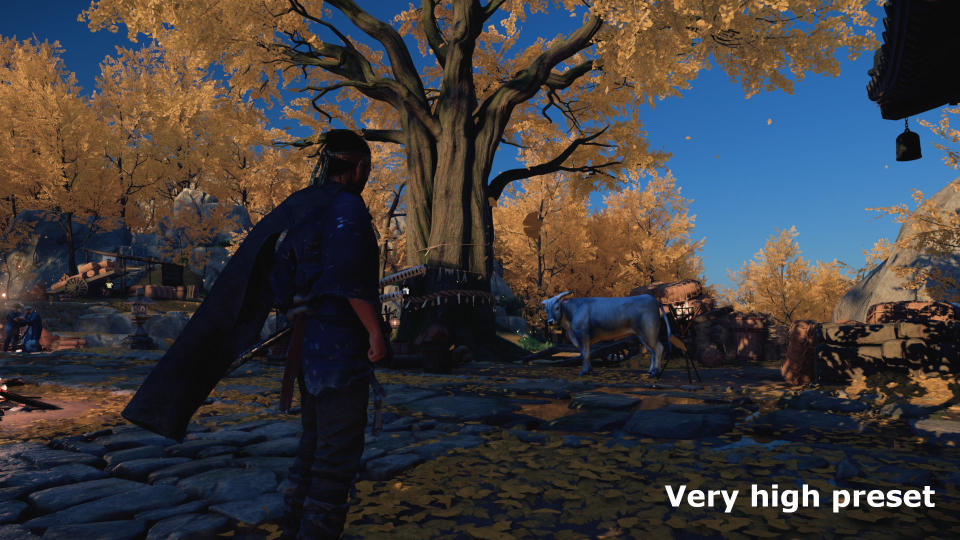
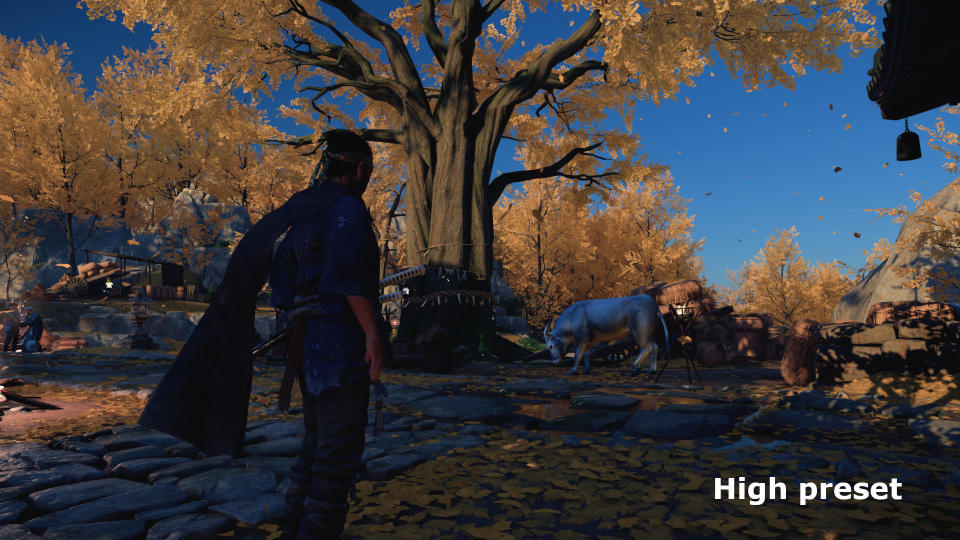
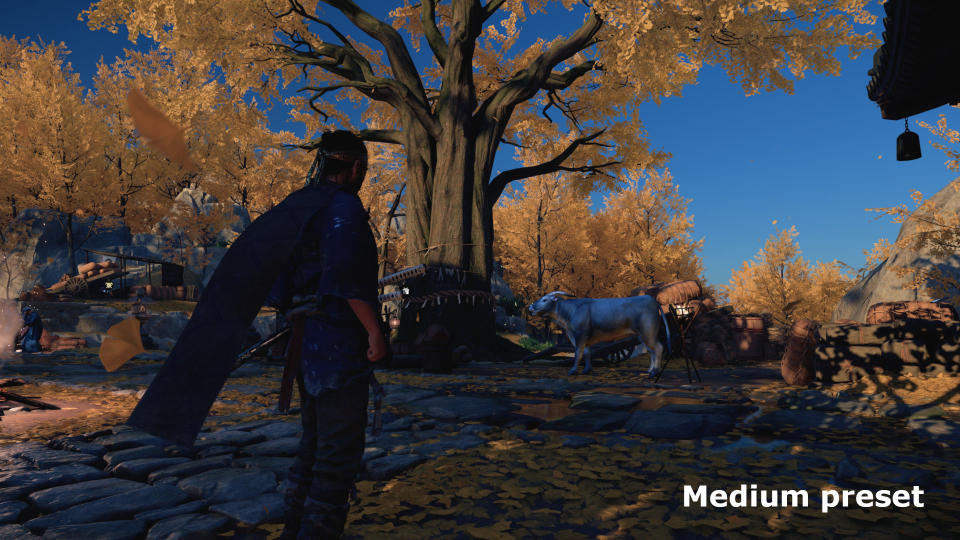
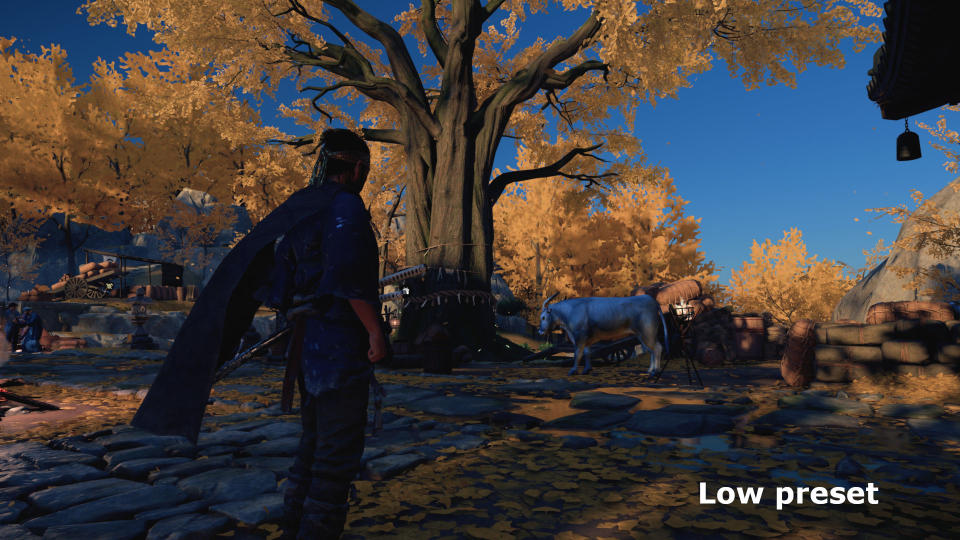
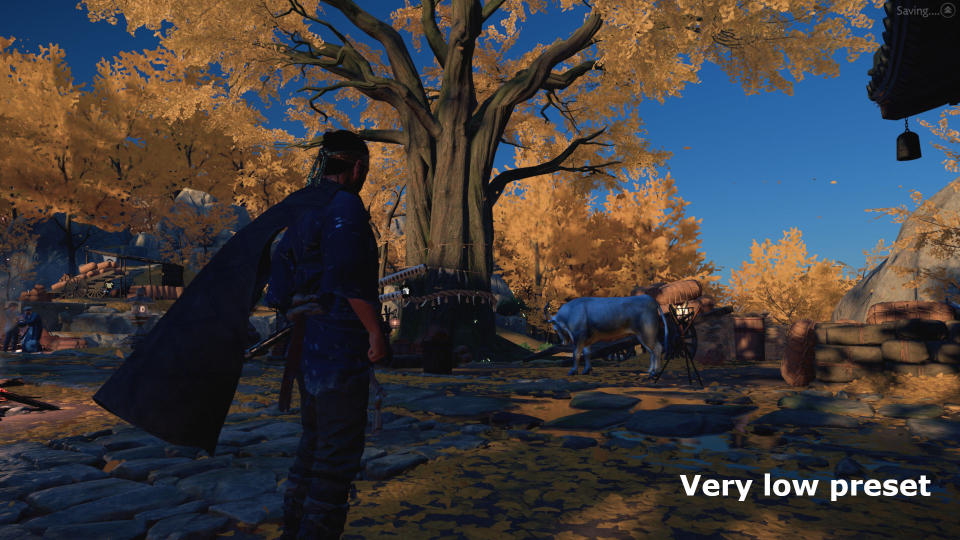
Ghost of Tsushima is, though, very GPU demanding, especially with the graphics set to High or Very High. That final preset doesn't max out some of the quality settings, such as shadows, volumetric fog, and ambient occlusion. You might be thinking that a PS4 game shouldn't be like this, but it's worth noting that the best PS4 games were created to be played at relatively low resolutions and low frame rates.
That meant the complexity and number of shaders could be ramped up, without impacting the performance too much. However, running at 4K natively, with an uncapped frame rate with some added PC goodies, those lengthy shaders are quite a challenge for any GPU.
But, even if you do have one of the best graphics cards you can buy right now, you won't get ultra-high frame rates (e.g. 200 fps or more). Not without the use of performance-enhancing tech, at least.
Upscaling and frame generation
The more Tsushima pixels you give the GPU to process, the more it's going to struggle, and this is where upscaling can help significantly. Nixxes Software has added three systems to the game—AMD's FSR, Intel's XeSS, and Nvidia's DLSS—so every PC gamer will be able to enable something to boost the frame rate.
You've also got AMD and Nvidia frame generation systems to boost things even further and for the first time in any game, it's entirely decoupled from the upscaler. Nvidia launched its Frame Generation feature like that, and it's great to see AMD following suit, even for Nvidia users.
Because, as we've already mentioned, it's now possible to run DLSS Super Resolution and FSR 3 Frame Generation on, say, an RTX 30-series graphics card. The game performance charts show that Ghost of Tsushima runs much better at lower resolutions, and the frame rate rapidly declines as the pixel count increases. So it is no surprise that upscaling helps performance considerably.
Both FSR and DLSS add a noticeable degree of blurring to the overall visuals at high performance settings, but Quality and Balanced modes worked quite nicely—you get a decent bump in the frame rate, better anti-aliasing than TAA offers, and a very minor amount of object fuzziness. It's a shame that Nixxes Software hasn't added a sharpness slider in the upscaling options to let you set it to your own tastes, however.
When in motion, FSR is a little worse looking than DLSS, but there's not a great deal of difference between the two—it's there if you really look for it, but as long as you use Balanced or Quality modes, you're unlikely to be unhappy with the results.
What was a surprise was just how bad XeSS was. Only two XeSS settings actually improve performance (Ultra Quality and Ultra Quality Plus) and even then they still introduce some serious shadow artifacts. I tried reloading the game between changes in XeSS settings, rebooting the PC, and letting the Arc A770 cool between each run—none of it made any difference.
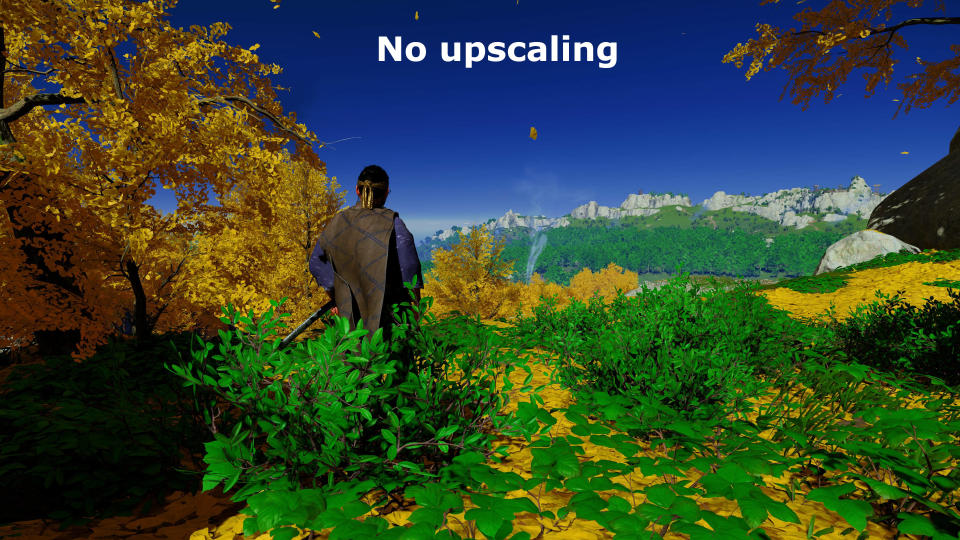
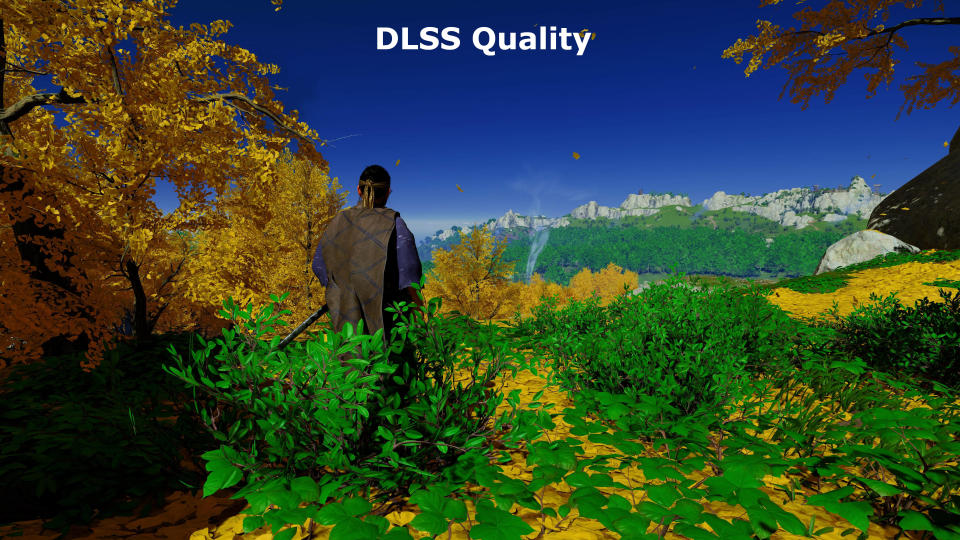
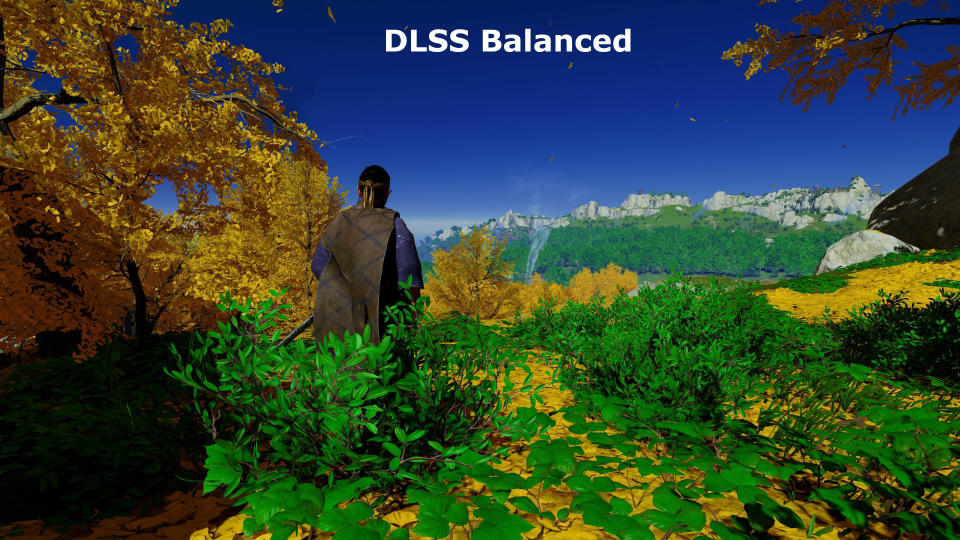
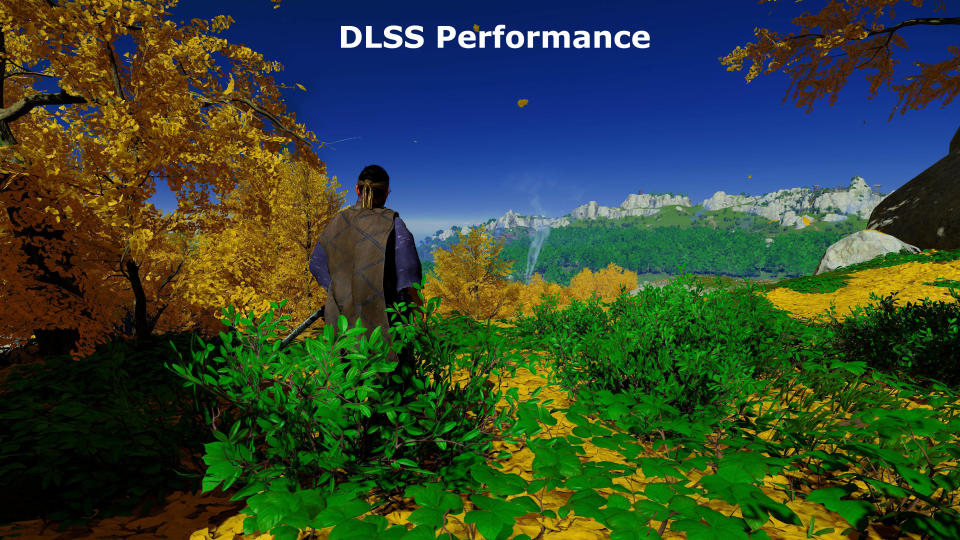
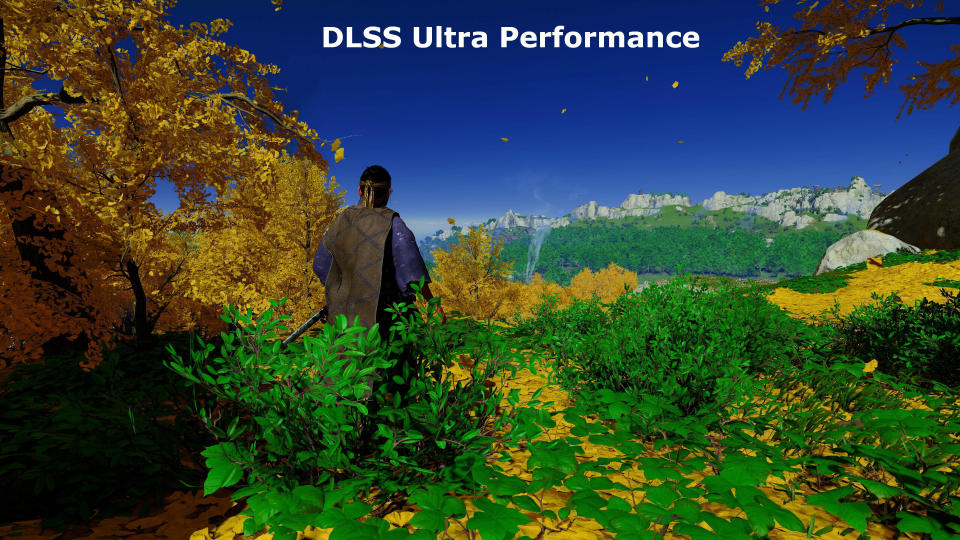
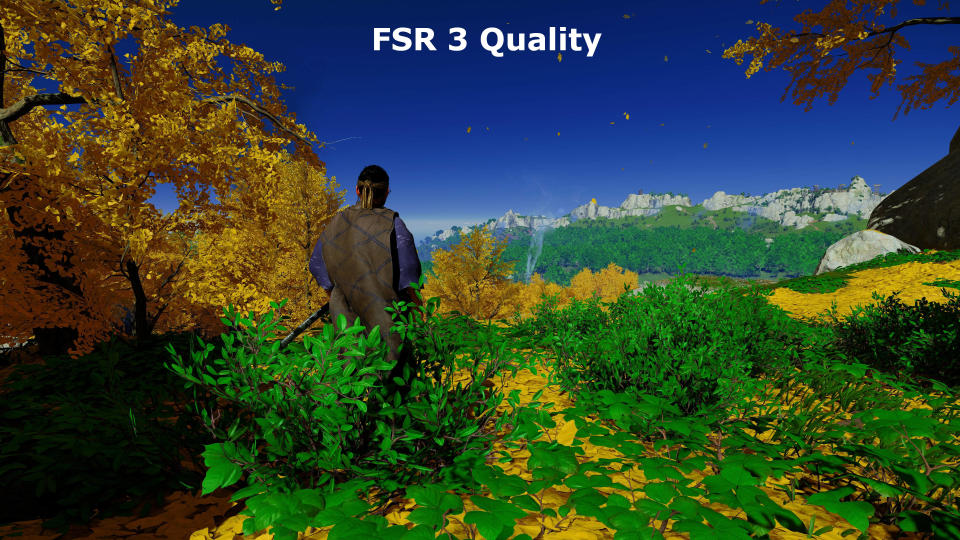
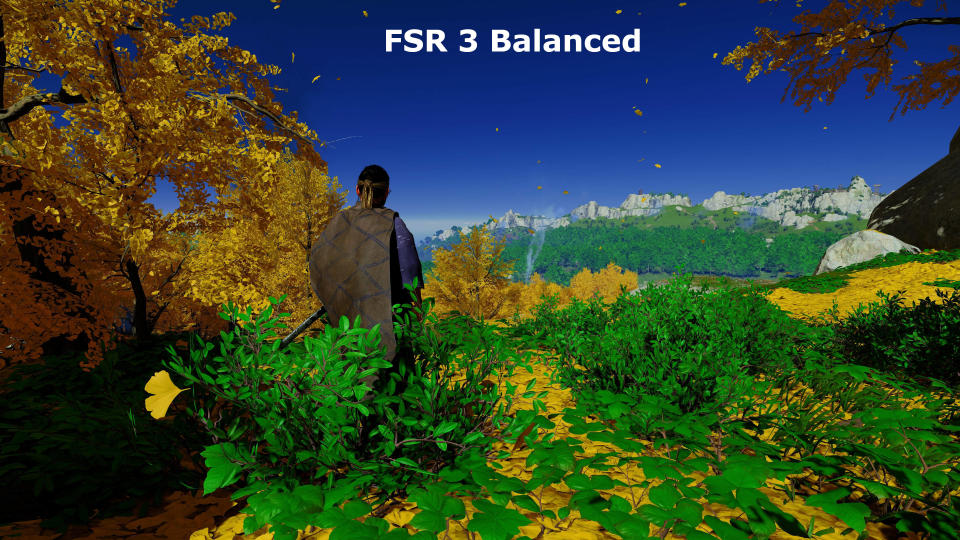
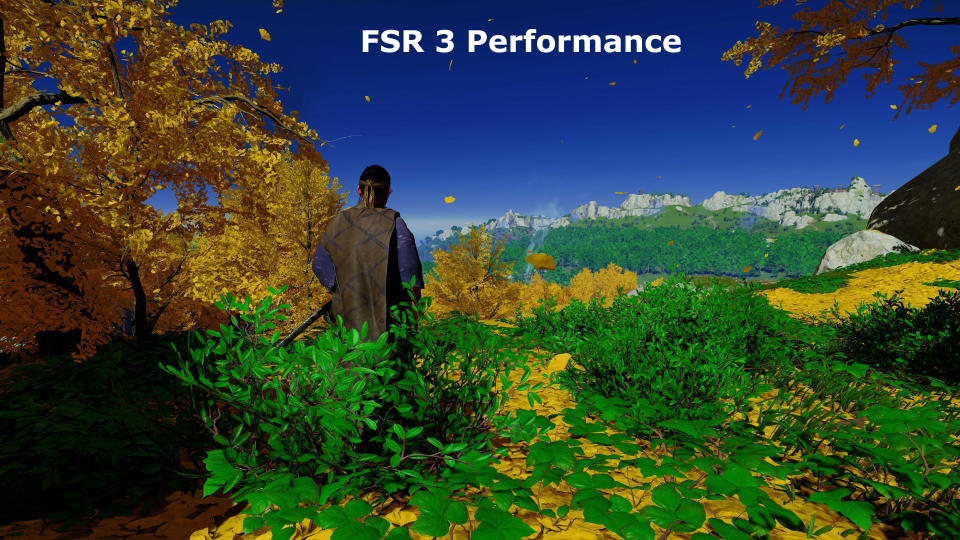
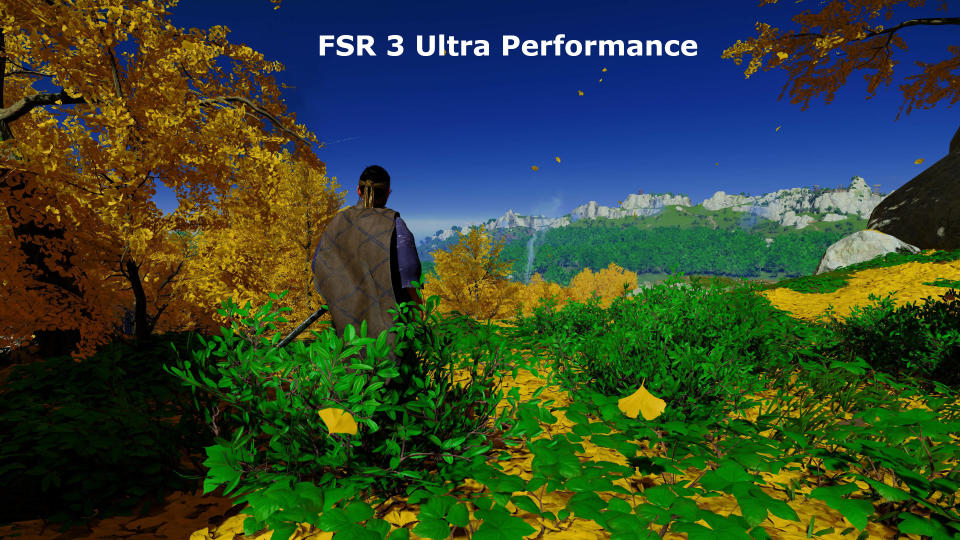
The Alchemist GPU generally has serious problems in Ghost of Tsushima, including misplaced meshes, jittery shadows, and pretty low performance all around. That 1080p Very High result of 35 fps isn't a mistake, despite 1440p Very High being 21 fps higher. I checked it multiple times and each time, the lower resolution runs were worse than the higher resolutions. I also tried a couple of driver sets, including the very latest WHQL release, to no joy whatsoever.
But at least it runs the game, which is more than can be said for the Radeon RX 7800 XT I tried to use for this analysis. It managed all of three seconds of game time, before freezing, and then crashing to the desktop. The GPU displayed the same problem in all of the tested platforms; it wasn't overheating nor lacking in power, so I can only assume that I either have a glitchy graphics chip or AMD has a bit more work to do in its drivers for this game.
One last thing to note about frame generation—both AMD and Nvidia's systems work pretty well, even when the base frame rate is quite low, but cutscenes tend to be problematic with either of them enabled. I've mostly experienced a bit of micro-stuttering but sometimes got a black frame, flickering in and out of view.
Of the two, Nvidia's DLSS frame generation produces superior-looking results. AMD's FSR 3 interpolation system often has problems with narrow tree branches, resulting in them rapidly flicking about.
Ghost of Tsushima VRAM usage
For the most part, Ghost of Tsushima doesn't use a huge amount of graphics card VRAM. Using Microsoft's PIX development tool, I recorded actual usage, rather than allocated memory, and you can see that owners of 8GB cards will be fine—just as long as you don't try to max out the quality settings.
However, it's worth noting that all of the performance figures we've looked at so far are for the open-world areas. Move to a village or town, where there are lots more finer details and moving meshes, and the frame rate does take a bit of a knock. The CPU and GPU loads are much higher in such areas, and even really powerful gaming PCs will struggle to push high frame rates without the aid of upscaling and/or frame generation.
If you have an 8GB graphics card you might experience stuttering in these areas, as the VRAM usage exceeds that figure when running at 4K Very High or more. I say 'might' because I actually didn't—the RTX 3060 Ti struggled to reach 25 fps in the Golden Temple location but at least it was a consistent frame rate, with no sudden hitches.
That said, there were a few times immediately after loading a saved game when a rapid camera movement would induce a momentary pause. But that was pretty much the only time.
It's possible that these were caused by shader compilation. Nixxes Software probably uses the same system that it developed for some of its earlier ports, where some of the shaders are compiled during the main loading of the game, with the rest being done via multiple CPU threads as and when they're required during gameplay. The issue was too sporadic to pin down as to the exact cause but if it is a shader compilation problem, then I suspect it will be ironed out in a later patch.
Best settings
Due to time constraints, it just wasn't possible to dig into the individual graphics settings to determine how each and every one impacts performance. However, thanks to many hours of benchmarking the quality presets, I can say that the published system requirements seem accurate enough and along with my own performance charts, you'll be able to judge how well it will run on your gaming PC.
What I will say is don't bother with either the Very Low or Low quality presets. Ghost of Tsushima is still ultimately a PS4 game, despite Nixxes Software's magic, and a lot of its beauty and visual splendour is held together by the stunning art direction, lighting and shadow effects, rather than high-resolution meshes and textures.
Turning down the quality settings exposes the very aggressive LOD (level of detail) system that Sucker Punch employs in the game, and the end result isn't very nice. Think of the Medium preset as being the lowest one you should go with, and you'll be fine, as that's pretty decent looking.
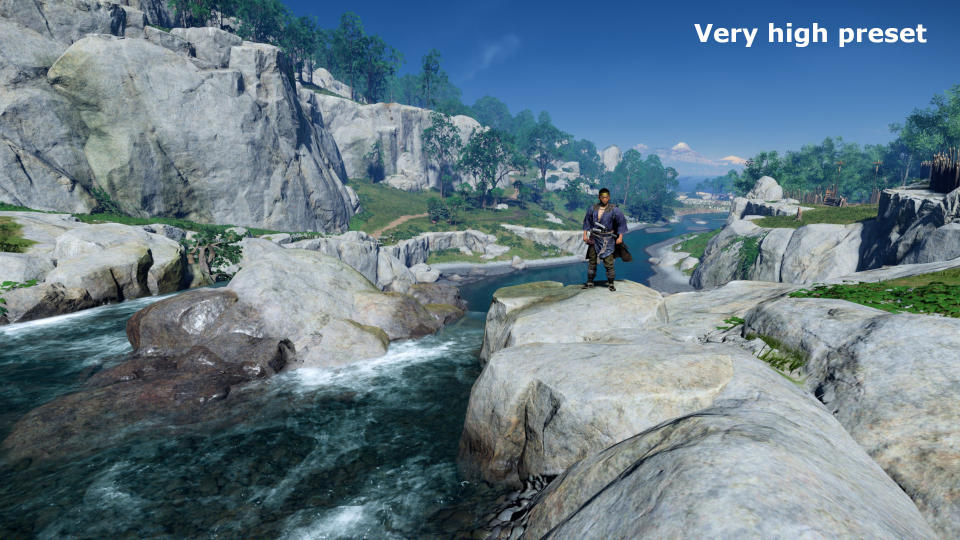
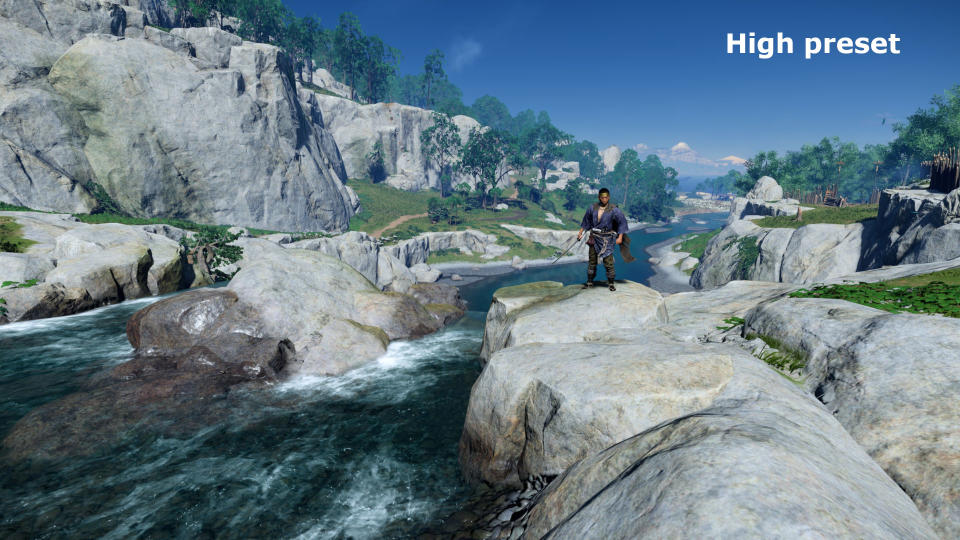
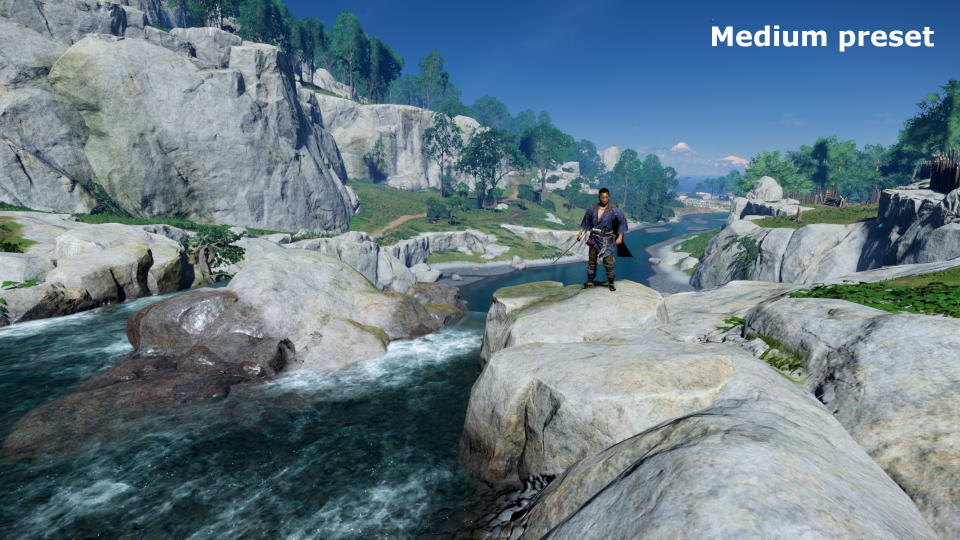
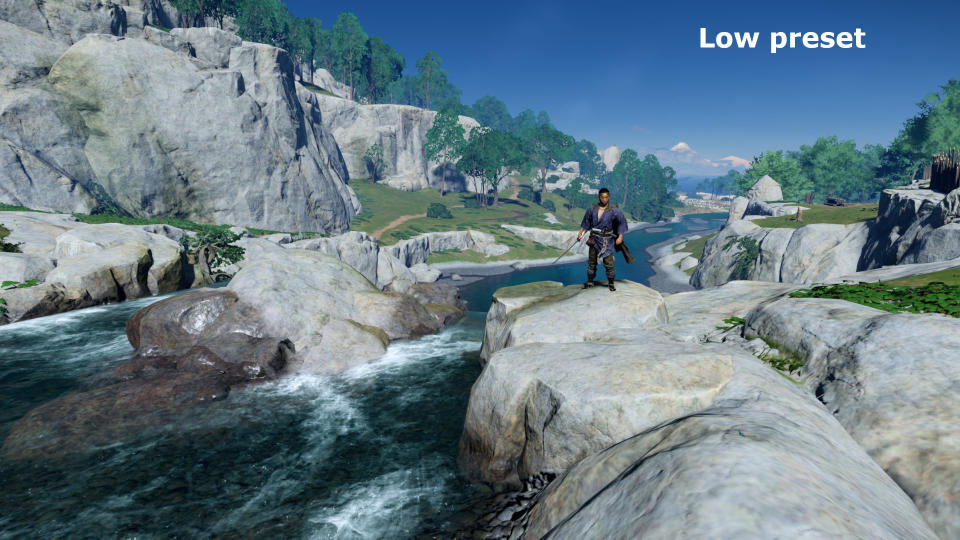
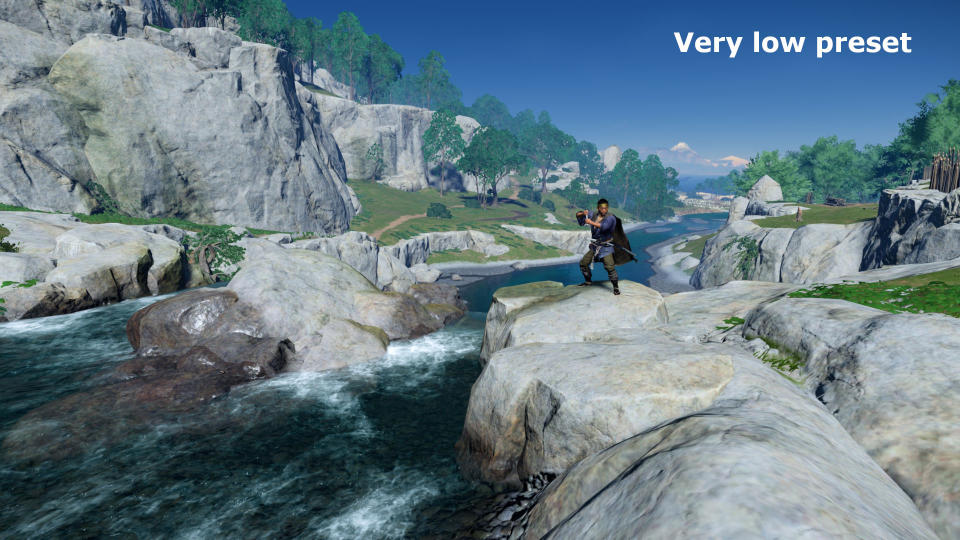
If a handheld gaming PC like the Asus ROG Ally can run the game at over 30 fps with the Medium quality setting, your PC likely will too.
Of course, if you want the game to really shine, then the Very High preset or maximum quality is the only way to go. On a great 4K gaming monitor, Ghost of Tsushima looks stunning, though pushing the camera up too close to certain models will show the limits of the visuals.
And you'll need a mighty GPU to run it at high frame rates, if you go all out with the graphics—getting less than 80 fps at 4K Very High on a RTX 4080 Super, in a game that doesn't use ray tracing, tells you all you need to know.
Fortunately, it's not the kind of game that needs 140+ fps to be thoroughly enjoyed, and once all the glitches and problems have been fixed, it should run well enough on most gamer's PCs. Nixxes Software has done a very solid job at porting the PS4 game, not just in terms of performance, but in how it's made Ghost of Tsushima as PC-friendly as possible.
And it's been a good while since we've seen a new game like that.

